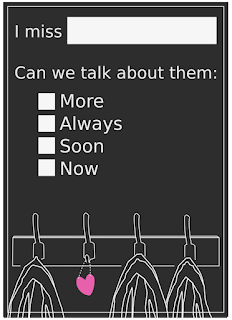Just discovered Pope.L, ironically (but perhaps fittingly since death is a recurring theme in my work) through his obituary. I really like the way he uses humour to say difficult things without people instinctively rejecting them - a bit like I said before about using humour as a 'viral coating' to allow more serious messages to penetrate. For instance, he had a business card with "America's Friendliest Black Artist", which I think is brilliant - it's sort of just funny and satirical at one level... And then you start thinking about how it hits differently because it's "black artist", and how people of colour could feel obliged to be 'extra friendly' simply because of their skin colour.
Supporting this idea of using humour and whimsy to 'inject' difficult messages, Pope.L said:
“So you have this idea of pain and struggle sitting alongside the lightness. This language is a problem, but it’s also an interesting problem. How can I make these words approachable but not lose the sting of their character. It is a writing problem, and it is a performing problem.”
The idea of making words 'approachable' while not loosing the 'sting' is fascinating. I want to use humour to make difficult ideas 'approachable' or 'palatable' while not diluting them to the extent that they loose their meaning, or become pitiful. A lot of the advertising for charities seems to have fallen into this tar pit - soft strings music, mushy soft-focus imagery, and sad stories robbed of any risk of offending.
Pope.L also had things to say on my favourite 'topic d'jour' - meaning in art. I am VERY convinced that meaning is central to my personal definition of art, Pope.L said:
“Meaning is important, just because I value nothingness or incompleteness or absence does not mean I do not value meaning. It’s just that sometimes meaning, our use of it, can be used to obscure meaning or devalue it. And then there is the obvious [...] As a tool, meaning has its limits.”
I immediately agree with the obvious - meaning too painfully laid bare is not compelling, it's dull, not engaging (consider the thought experiment of placing next to the artwork a painfully detailed explanation of ever aspect of the image and what it means). Art needs to promise meaning, and it needs to honour that promise - I worry that a lot of modern art promises meaning but ultimately betrays the viewers trust by having been constructed with a focus on LOOKING meaningful, not BEING meaningful. I think what Pope.L is saying (and I'd love comments if I'm not 'getting it') is that meaning has to be applied mindful of it's limits - specifically that by mandating 'one meaning' too aggressively, you rob people of the chance to find and/or explore other possible meanings - by giving everything a meaning, you don't tempt people to explore further.

